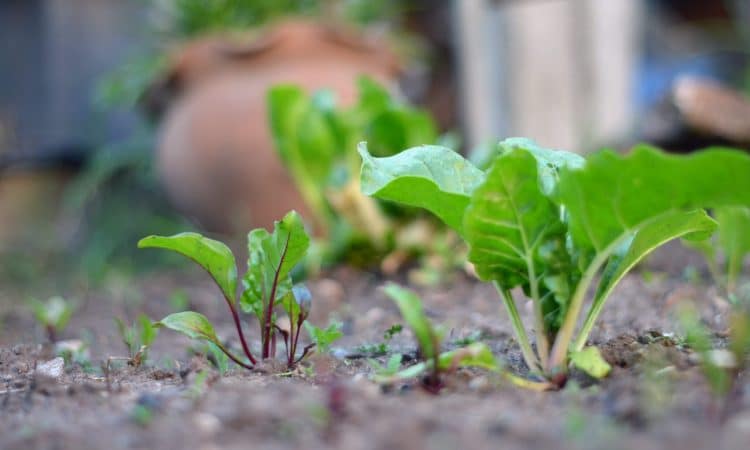
August is the perfect time to sow some of your favourite veggies! The warmer weather is ideal for them to establish themselves before the first cold spell arrives, and planting now will ensure you have an abundant and varied autumn and winter harvest. Here are four veggies you should definitely consider for your vegetable garden:
1. White onions
Why plant white onions? White onions are an excellent choice for gardeners, thanks to their sweetness and versatility in the kitchen. Sown in August, they have time to root well before winter, allowing for an early harvest the following spring.
How to sow?
- Soil preparation: Onions prefer well-drained, fertile soil. Loosen the soil deeply and incorporate well-decomposed compost or manure.
- Sowing: Sow seeds directly in the ground in rows 25 cm apart. Sow seeds 1 cm deep, 2 cm apart.
- Care: Water regularly to keep the soil moist. When the seedlings have 2 to 3 leaves, thin them out at 10-15 cm intervals to allow the bulbs to develop properly.
- Transplanting in October: If you sowed in a nursery, transplant the young plants in October, spacing them 10-15 cm apart in furrows 25-30 cm apart.
Additional tips :
- Winter protection: In regions with harsh winters, apply a layer of mulch around the plants to protect them from frost.
- Crop rotation: Don’t replant onions in the same place every year to avoid soil-borne diseases.
2. Spinach
Why sow spinach? Spinach is a cool-season crop that grows quickly and can be harvested throughout the autumn. Cold-hardy varieties can even survive the winter for an early spring harvest.
How to grow?
- Soil preparation: Spinach prefers soil rich in organic matter. Add compost or organic fertilizer to enrich the soil.
- Sowing: Sow directly in the ground in rows 30 cm apart. Plant at a depth of 2.5 cm.
- Care: Keep the soil moist, especially during dry periods. Thin plants at around 10 cm intervals to allow good air circulation and avoid disease.
Additional tips:
- Continuous harvesting: You can harvest young leaves as soon as they reach 5-7 cm in height. Cut off the outer leaves to encourage new growth.
3. Carrots
Why sow carrots? Carrots planted in August will ripen in autumn, providing crisp, sweet roots ideal for soups, stews and winter salads.
How to plant?
- Soil preparation: Carrots need well-drained, loose soil. Remove stones and add sand if necessary to improve drainage.
- Sowing: Sow seeds in rows 30 cm apart, 1 cm deep. Cover lightly with soil and tamp gently.
- Care: Keep soil moist until germination. Once the plants are a few centimetres tall, thin them out at 5-7 cm intervals to allow the roots to develop properly.
Further advice:
- Protection: Use insect netting to protect young plants from pests such as carrot fly.
- Straw: Apply a thin layer of straw around young plants to conserve moisture and reduce weeds.
4. Chinese cabbage
- Why sow Chinese cabbage? Chinese cabbage, or pak choï, is a cold-hardy vegetable that grows quickly and can be harvested before heavy winter frosts. It’s rich in vitamins and minerals, and its crunchy texture adds a delicious touch to many dishes.
- How to grow? Additional tips: By sowing these vegetables in early August, you prepare your garden for a rich and varied harvest, and ensure continuity of production right through to winter. Whether you choose white onions for their versatility, spinach for its quick growth, carrots for their sweetness or Chinese cabbage for its crunch, these vegetables will enrich your garden and your table.
- Insect protection: Use a protective veil to prevent attacks by pests such as flea beetles and caterpillars.
- Staggered harvesting: Harvest young leaves for immediate consumption, or allow plants to mature fully for larger cabbage heads.
- Soil preparation: Enrich the soil with well-decomposed compost to provide the nutrients needed for rapid Chinese cabbage growth.
- Sowing: Sow seeds directly in the ground in rows 30 cm apart, 1.5 cm deep.
- Care: Water regularly to maintain constant humidity. Thin out plants at 20 cm intervals to ensure good leaf development.

